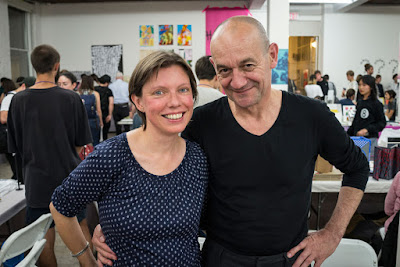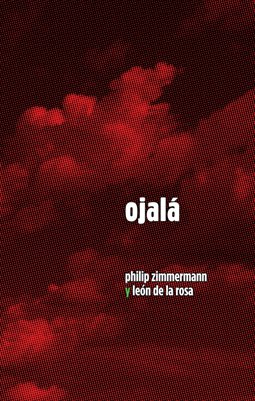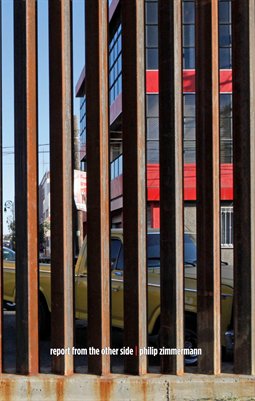It's now been a couple of weeks since I got back from New York and the 11th version of the NYABF and I feel that I have at least partially digested the experience. This year
was as crazy as ever with 39,000 attendees. Thank god for the special "industry" hours (10:00 am to 1:00pm on Friday morning) for collectors, curators, the critics and press, and Special Collections librarians. That is the only time that it is possible to move around and actually have civil conversations with the artists and publishers. Almost all of the 30 or so books that I bought were purchased in that time slot.
Clif Meador and I again decided not to get a table together, and I am glad that we did not. In the end, Clif was not able to come because of a conflict due to his Chair of the Art Department job at Appalachian State University, and I am so glad that I did not have to sit at our table for three and a half long days.
This year everyone who went to the preview night ($10) on Thursday evening got a special edition plastic fan, that as an art object was somewhat underwhelming, but at least was practical in the usual sweltering heat of some of the exhibition rooms.
The NYABF itself was not too different from every other year since they moved to MoMA-PS1. There were some nice new floral beanbag seats in the courtyard. One other big and welcome change was that there was much less super-loud and intrusive music in that same courtyard. They have been listening to the feedback, obviously. Anyone eating food in the courtyard and any of the artists with the tables in the adjoining VW Dome had to wear earplugs and it was impossible to have any sort of conversation. The music varied too in past years, from noise and industrial bands to ear-splitting electronica. This year the musical fare was very subdued and most of the time it was possible to talk peaceably to fellow fair-goers and vendors.
There was also the usual semi-baffling "project" rooms, which people look down on, but nobody quite understands what is going on or what the point is. This is (I think) the Gogosian Gallery project room in the basement, which everyone would stare down into the project space from the first-floor balcony, then move along. I have no idea what they were doing or what they were up to, and probably should have spent some time going down and investigating. Strangely, this year on the third floor of MoMA-PS1 was a huge and very comprehensive retrospective of the work of Vito Acconci. I wandered up there twice during the three days I was at the fair and was surprised how empty it was. I guess this was really two very different audiences. A lot of the old famous Acconci pieces from the late sixties and seventies were there. Some seemed kind of dated, others still had the slightly squeamish power that I recall from when Vito Acconci came to Cornell as a visiting artist when I was an undergrad. But it was odd having ol' Vito doing his compulsive whispered ranting behind a gallery wall, with the huge crowds of hipster youth one floor below rooting through piles of books.

Every year the selection of vendors/artists/publishers selling and showing books changes. Missing this year were old favorites like
Archive of Modern Conflict from London,
Lubeck from Leipzig, Germany and
Brad Freeman representing
JAB and the Center for Book and Paper in Chicago which seems to be undergoing some sort of transformation.
Scott McCarney and
Skuta Helgason were there of course but they did not have their own vendor's table. In fact, Scott did a really nice display for Skuta's store
ARTBOOK@MoMA-PS1 on his
Bananaco Project. Here is Scott in front of the window display, being photographed by
Champe Smith. Some of the usual collectors were not there either:
Jack Ginsburg, from South Africa, perhaps the largest collector of artists' books in the world did not come this year for the first time in many years.
It was nice to run into so many people I knew from the past,
Barbara Moore from
Fluxus,
Bound+Unbound and
Something Else Press fame. Also there was
Heidi Nielsen, who I got to talk to for a little while. I was really happy to hear that she is teaching my old Experimental Book class at SUNY Purchase. I am sure that it's an amazing class, re-thought and re-tooled with strong conceptual underpinnings. It would be great to see the work that comes out of that class.
Also at NYABF were
Mary Lum, artist and Bennington College professor, who just finished a very cool new book that was on sale at Printed Matter. To her right is
Scott McCarney, erstwhile book artist and paper sculptor, shown earlier in front of his installation. To her left is
Doro Boehm, Head Special Collections Librarian of the
Joan Flasch Artists Book Collection of the School of the Art Institute of Chicago.
There were many other pleasant contacts with folks, not all of them photographed, alas. We had dinner a couple of times with
Jan Voss from
Boekie-Woekie in Amsterdam, another of our dear friends who make the regular trip from Europe each year for the NYABF. I also ran into
Alejandro Cartagena several times. I presented with him this past summer at the
VSW Photo-Bookwork Symposium organized by Tate Shaw in Rochester. Alejandro will be speaking here in Tucson in November, and he was buying almost as many books as I was. He also had books for sale at the
SkinnerBoox table. I thought it was interesting that there was a publisher called
SkinnerBoox since the keynote speaker at the conference,
Martha Wilson is the only person that I have ever met who was brought up as a baby in a Skinner Box. It was also nice to see old friends like
Leonard Seastone,
Bill Deere and
Warren Lehrer, all old colleagues and friends from SUNY Purchase. It was great to photograph
Elisabeth Tonnard and
Joachim Schmid, a ritual that we have established over the past four or more years. It's always nice to see their friendly faces and browse all the new artists' books that they bring each year.
On Friday morning
Max Schumann, the Director of
Printed Matter, took around a large group of curators and ARLIS librarians on a tour of the NYABF.
One of the places that he stopped at was the table shared by
Rorhof, a fabulous new publisher from northern Italy, and
Danilo Montanari Editore, also from Italy. They were two of the newcomers to the NYABF and they were showing some amazing new work. I bought a number of really interesting new artists books from them, especially from Rorhof. This was the first year that Rorhof, from Bolzano Italy, has shown at the NYABF. They are a publisher to watch and I was sorry that we had not included them in the show that Clif Meador and I co-curated called
The Authority of the Book. Rorhof is the pub
lisher of Nicoló Degiorgis' Hidden Islam (which won all sorts of prizes last year in photobook competitions) and the already sold-out PEAK, both really important books. I had not heard much of them before, though I had bought Hidden Islam last year when it came out, but they are publishing books that really live up to the idea of artists' books as being bookish examples of a conceptual art medium and not just boring repositories of unique single images.
Max also took them by the Anartist booth, with Gordon Simpson, the proprietor of Anartist showing his archival and historic artists book wares.
There were several dealers selling collectible artist books but Gordon's Anartist may be the biggest and most important.
I always find it interesting to look at the wares that Gordon has out since it gives a rough snapshot of where the market is for artists' books. Sometimes if makes me feel good like this copy of John Baldessari's Fable which I bought in 1979 for about $10 and which is worth $5200 right now. And Gordon Matta-Clark's Splitting which I also bought in the '70s for few dollars. Matta-Clark was at Cornell when I was there as an undergrad in the late '60s and early '70s.
But then, on the personal downside, there are examples like Ed Ruscha's Baby Cakes which I used to own (right below Splitting) but was stolen by a student of mine in New York –and is now worth a lot of money. Easy come, easy go...
Also interesting to see was a copy of performance artist Linda Montano's autobiographical book Art in Everyday Life, that we printed when I was part of Open Studio Printshop in Rhinebeck NY in the early 80s. I did all of the prepress on it, Mary Neal Meador did the typesetting and Clif Meador printed the book on our Heidelberg.

There were a number of amazing publishers at the NYABF this year, like Siglio, they just moved from LA to New Yorks' Hudson Valley. Of course Bookie Woekie, Onomatopee, both from the Netherlands. Raking Leaves, from London, but run by an amazing woman from Sri Lanka, Sharmini Pereira, who was there talking about each of the titles. They had to have one "best value award" with their books heavily subsidized by the British Arts Council. Every book, even ones with a huge number of pages and very high production values was $20. Roma Publications from the Netherlands, with a number of books by the great designer Karl Martens, Dashwood Press, ABC Artists Book Collective, Ice Plant and J+L Books, RVB Books, and of course the Swiss publisher Kodaji Press, operated by the very friendly Winfried Heininger. I was happy to purchase several of his books. He is one many publishers to tell me that he was going to be at the LA Book Fair at the end of February at the Geffen Center/MOCA.

One of the interesting things about this year's fair is that for the first time there was some sort of book fair competition: and that would be the newly minted Independent Artists' Book Fair or IABF. Because of the steep rise in the price of a table at the NYABF over the years, and the fact that over 150 people who applied to show at the NYABF were rejected, there was a strong push for starting a competing book fair at the same time slot and time since so many out-of-town people were going to be here for that event. It needs a bit of work, but it's a start.
Here are some other pictures from the IABF site which was located in a warehouse area of Greenpoint, Brooklyn. It was much cheaper for a table here compared to the NYABF. There was not a lot of foot traffic, and the tables were obviously made right before the event, but for the first year of an event it seemed pretty successful. It remains to be seen if they will persevere and present for more years and grow through experience.
The IABF site is a short trip on the G train form Long Island City to the Greenpoint warehouse area. We went with a number of other book friends, including Jim Prez who did not have a table in the 'Zine tent for the first time this year. He was enjoying that new freedom with Gregory Eddi Jones who had a table with his wife, co-founders of In The In-Between at the IABF.
Also there was the amazing Robbin Silverberg, who lives only a few blocks away from the IABF warehouse site. She and her simpatico sculptor husband Andras Borocz joined us at the book fair. I hope that the IABF does thrive since it can be an interesting counterpoint to the much more established NYABF.

Would I show at the independent Art Book Fair? Probably not. It's a little too far from the NYBF, which, to be honest, is where all the action is. Although the Printed Matter event has some problems, especially not having enough tables for smaller independent publishers and artists with more affordable prices; still, my allegiance is still with that organization, due to it's long history, (and the fact that I was on the Printed Matter Board for about 5 or 6 years in the nineteen nineties, and will always have a soft spot in my heart for PM.) It is still probably the most important distributor for artists publications in the world. The fair is a major fund-raising event for PM and so we all must continue to support it.
The one thing that I did not take part in this year was the concurrent NYABF Conference, presented by ARLIS, which is mostly held in some of the basement rooms and the theater of PS1. Martha Wilson spoke and I probably should have gone to see that, but Martha is not as critical a force today in the book world as she once was. I would have liked to have heard the conversation between Karel Martens and an interviewer, but it was held on Sunday afternoon and by that time I was always in the air heading back to Tucson.


































